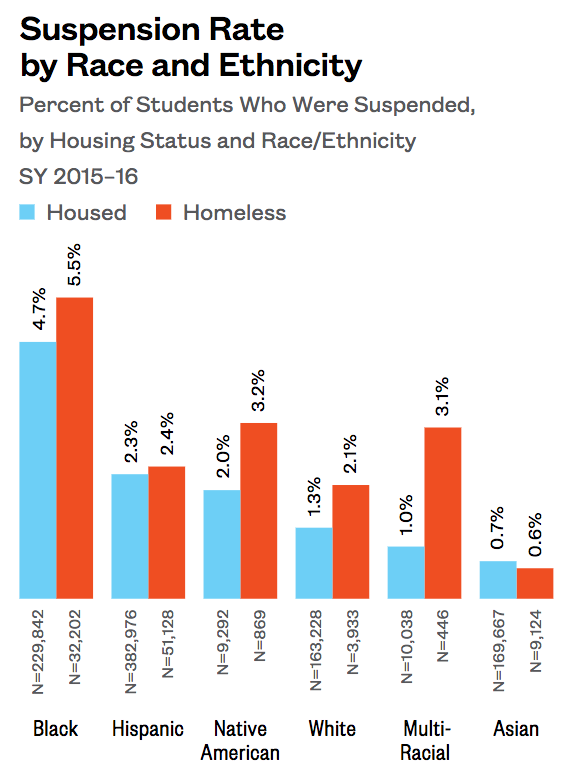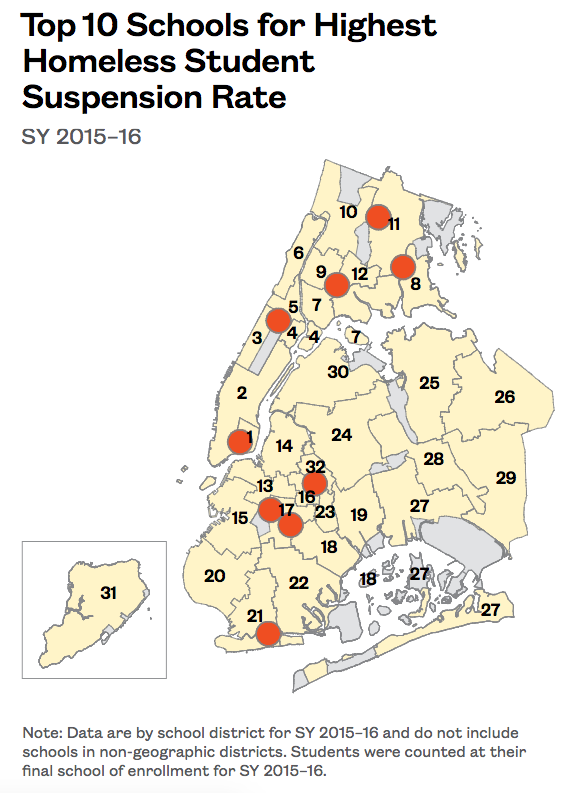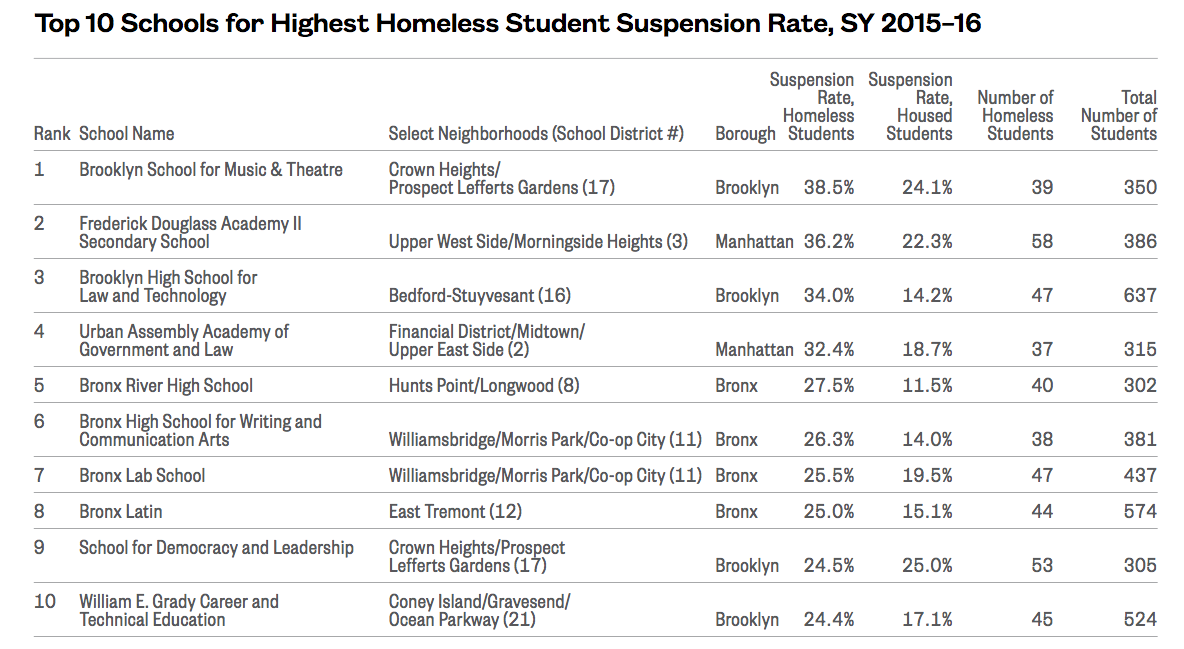Children who experience homelessness are often confronted with roadblocks, potholes, twists, and turns that prevent them from ever reaching their full potential. They are frequently sent to school sleep deprived, malnourished, and with emotional and mental challenges—yet are expected to perform at the same levels as students without the same baggage. Children who were homeless faced a greater risk of being suspended from school. What’s more, homeless black students were suspended at over twice the citywide average.

Why does this occur? A child who comes to school hungry will struggle to focus in class. Sleep deprivation can lead to difficulties sitting attentively and retaining information. Family violence can cause stress and anxiety. When dealing with these and other challenges, children may act out in school or struggle to meet a teacher’s demands.
In addition, homeless students are identified later than their peers as needing an Individualized Education Plan. When attention deficits or other learning disabilities are not met with adequate support early on, they can later turn into behavioral problems that lead to suspensions. Should behavioral challenges brought on by unsupported needs mean that a child faces disciplinary actions at school?
I worked as a school teacher before joining ICPH as a policy analyst, and I have seen firsthand that the challenges homeless students face are enormous. We continue to hold them to the same behavioral standards as housed students, often without adequate resources, and then penalize them for not meeting those standards. We all know that missed learning time places a student at risk of falling behind, being retained a grade, and dropping out of school. A student who drops out faces greater risks of being unemployed or incarcerated. Essentially, students experiencing homelessness are more likely than their housed peers to be funneled into the “school-to-prison” pipeline. The effects of suspension on our City’s most vulnerable population needs to be part of the education reform conversation.
Services are needed to support homeless students and prevent them from being suspended. Schools serving a high concentration of homeless students should offer comprehensive services, such as school-based health centers, with social workers and school counselors on deck. This could mean the difference between a student acting out and being sent home, or a student who remains in class and is invested in learning. Teachers and school staff need additional resources, including more professional learning time dedicated to building knowledge around positive behavioral support or restorative justice strategies. A teacher may need a series of professional learning opportunities to fully internalize and become proficient in the use of Positive Behavior Interventions and Supports (PBIS) system techniques. These tools are especially critical for educators serving in middle schools where disparities are the widest.


We cannot afford to ignore the emotional and behavioral needs of homeless students. In addition to adding new programs, we must continue to evaluate the effectiveness of these programs and provide schools with adequate resources to effectively support students experiencing homelessness. Their lives and their futures matter.
Janice Tolbert, Policy Analyst